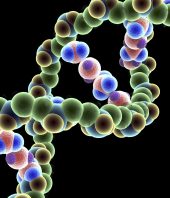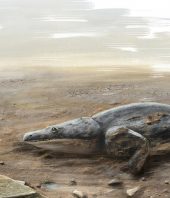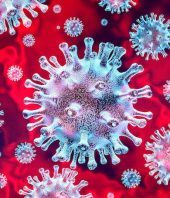The loss of anatomical features is a frequent evolutionary event. For example, humans and other great apes have lost their tail and whales have lost their legs. The most convincing evidence comes from the presence of vestiges in fossils. Unfortunately, the fossil record preserves predominantly vestiges of hard structures such as bones or teeth. Consequently, resolving the evolution of soft-tissue structures such as muscle or brain tissue requires analytical methods. A team of researchers from the Max Planck Institute of Molecular Cell Biology and Genetics, the Max Planck Institute for the Physics of Complex Systems, the Senckenberg Natural History Collections Dresden and the Natural History Museum Frankfurt now provide a new approach to resolve the evolution of soft-tissue structures, focusing on the evolution of testes in mammals.
Resolving the evolution of soft-tissue structures, crucially depends on accurate knowledge of the evolutionary relationships between the considered species. If these relationships are not fully resolved, the evolution of soft-tissue structures remains uncertain. Michael Hiller, who is affiliated with the two Max Planck Institutes and the Center for Systems Biology Dresden, says: "Instead of investigating soft-tissue structures directly, we traced the evolution of genes that are required for their formation."
For their investigation, the researchers used the descent of testes as an example. In almost all adult mammals, testes are located either in a scrotum or in the lower abdomen. But testes initially develop deep inside the abdomen at a position close to the kidneys, as seen in mammalian embryos. The final testicular position is the result of a descent process that occurs during animal development. However, several African species such as elephants, tenrecs, golden moles, elephant shrews, manatees, and rock hyraxes differ from the other mammals by lacking any descent and having testes at their initial abdominal position. It is an open question whether these African species lost the testicular descent process or whether other mammals gained that feature. Thomas Lehmann from the Senckenberg Frankfurt adds: "The evolution of testicular descent is controversial, because it is not fully understood how the African species are related to other mammals."
Non-functional genes
"To resolve this controversy, we analyzed DNA sequence data of 71 mammals and discovered that these African mammals possess non-functional remnants of two genes that are strictly required for testicular descent in other mammals" explains Virag Sharma, the first author of the study. This shows that functional versions of these genes were once present in the ancestors of African mammals that lack testicular descent today. These "molecular vestiges" suggest that the testicular descent process took place in the ancestor and was subsequently lost in African mammals.
"Importantly, this conclusion holds regardless of ongoing controversies about the evolutionary relationships among mammals" explains Heiko Stuckas from the Senckenberg Dresden. "The increasing availability of DNA sequence data of many species provides unprecedented opportunities to hunt for molecular vestiges and thus resolve debates on evolution of other anatomical traits" concludes Michael Hiller, who supervised the study.
Max-Planck-Gesellschaft. (2018, June 28). The evolution of testes: Molecular vestiges resolve the controversial evolution of the testicular position in mammals. ScienceDaily. Retrieved June 29, 2018 from www.sciencedaily.com/releases/2018/06/180628151819.htm






